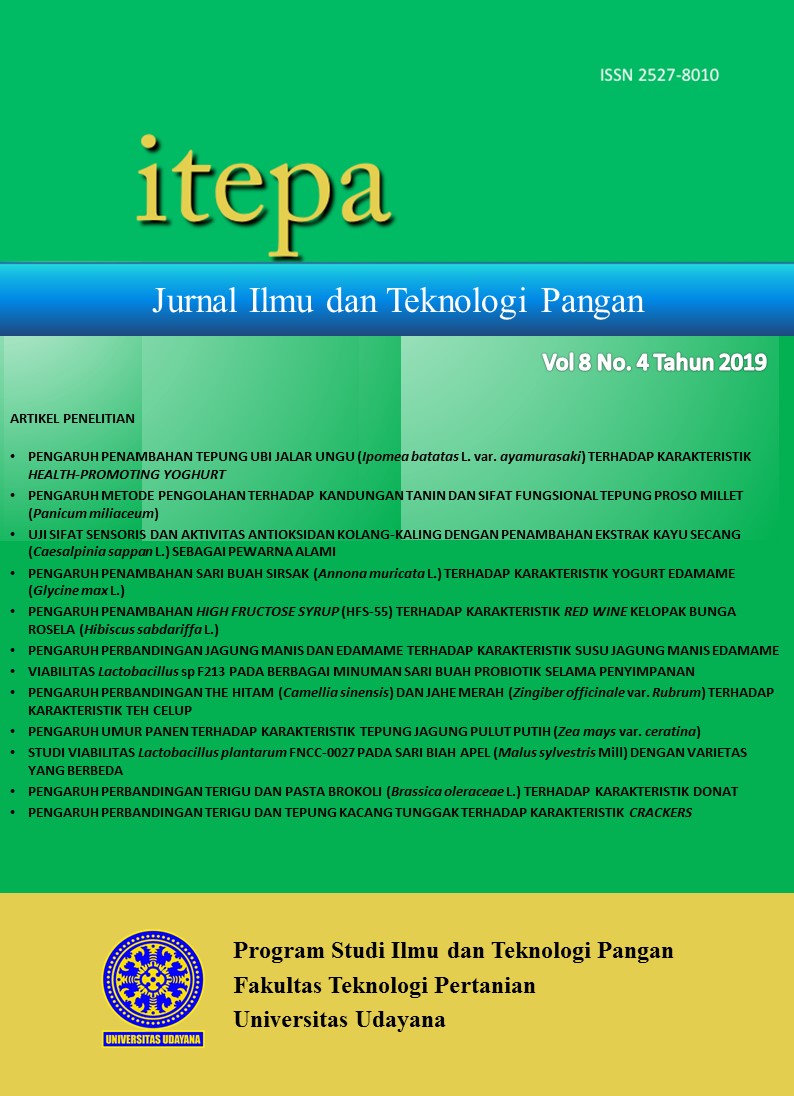VIABILITAS Lactobacillus sp F213 PADA BERBAGAI MINUMAN SARI BUAH PROBIOTIK SELAMA PENYIMPANAN
Abstract
Lactobacillus sp F213 (LbF213) is a lactic acid bacterium isolated from a healthy baby feces, which has been proven as a probiotic bacteria because it is resistant to low pH, bile salts, digestive enzymes, able to aggregate, attach and colonize the intestine, and interact against E. coli. This study aims to determine the viability of probiotic bacteria LbF213 on various juices during storage. The fruits used in this study were soursop, tamarillo, orange, and pomello. This study used a descriptive comparative method experimental design. The variables observed were total LAB, total sugar, total acid, and pH tested every 3 days from the 1st day to the 12th day in the cold storage. The results showed that the total LAB of LbF213 in tamarillo juice during 12 days of storage tend to be constant compared to soursop, orange, and grapefruit juice whereas total LAB, from the first day of storage was 1.37x106 CFU/ml to 12th day of storage was 1.81x106 CFU / ml with a total sugar value 3.13%, total acid value 1.22%, and pH 3.95.
Keywords: fruit juice, Lactobacillus sp F123, cold storage





